Osceola Wild Turkey
- February 22, 2024
- 0 comment
The Osceola Wild Turkey, a proud symbol of Florida’s untamed wilderness, is a distinct subspecies of wild turkey renowned for its unique characteristics and cultural significance. Found exclusively within the state’s diverse ecosystems, these magnificent birds boast glossy, dark feathers adorned with iridescent hues of green and bronze, setting them apart from other turkey subspecies. Their habitat preference leans towards the pine flatwoods and hardwood swamps of Florida’s peninsula, where they roost in trees, forage for food, and nest amidst dense vegetation.
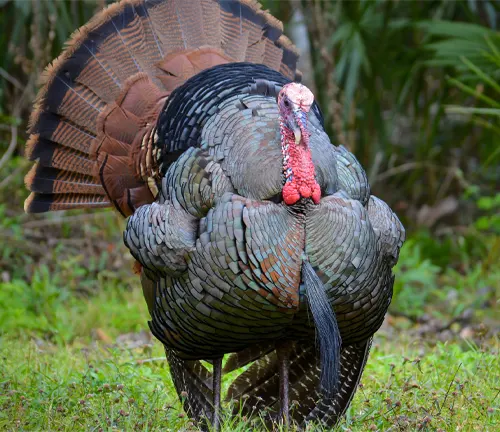
During the breeding season, male turkeys perform elaborate courtship rituals, displaying their vibrant plumage and vocalizing with distinctive gobbles to attract females. The hens construct ground nests hidden within the foliage, where they diligently incubate their eggs and rear their young, known as poults, teaching them the ways of survival in the wild. Despite facing threats from habitat loss, predation, and diseases, conservation efforts led by dedicated organizations and state wildlife agencies aim to ensure the preservation of these iconic birds and their vital role in Florida’s ecosystems. From their ecological contributions to their cultural significance among indigenous tribes like the Seminole, the Osceola Wild Turkey stands as a testament to the state’s rich biodiversity and the importance of safeguarding its natural heritage for future generations.
| Specification | Description |
|---|---|
| Scientific Name | Meleagris gallopavo osceola |
| Common Name | Osceola Wild Turkey |
| Habitat | Pine flatwoods, hardwood swamps |
| Range | Peninsula of Florida, USA |
| Feather Color | Glossy dark feathers with iridescent green and bronze hues |
| Physical Features | Prominent beard (in males), colorful wattles, vibrant plumage |
| Nesting | Ground nests concealed in vegetation |
| Breeding Season | Spring |
| Behavior | Elaborate courtship displays, vocalization, foraging |
| Diet | Omnivorous, feeds on seeds, fruits, insects, small reptiles |
| Conservation Status | Vulnerable due to habitat loss, predation, diseases |
| Conservation Efforts | Habitat preservation, research, sustainable hunting practices |
| Cultural Significance | Symbol of resilience and connection to the land |
| Importance to Ecosystem | Controls insect populations, disperses seeds |
Florida’s Native Avian Gem
The Osceola Wild Turkey, scientifically known as Meleagris gallopavo osceola, is a distinctive subspecies of wild turkey native to the forests of Florida. Named after the famous Seminole leader, Osceola, these turkeys are not just iconic figures in Florida’s wildlife, but also play vital roles in the state’s ecosystems.
Habitat and Distribution
Native Range
The native range of the Osceola Wild Turkey (Meleagris gallopavo osceola) is primarily confined to the state of Florida, USA. These turkeys are endemic to the Florida peninsula, where they have adapted to the diverse habitats found throughout the region. While they may occasionally venture into neighboring states, their population is most concentrated within Florida’s borders.

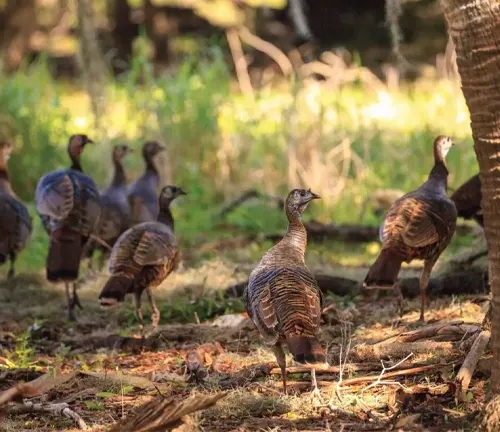
Habitat Characteristics
Osceola Wild Turkeys inhabit a variety of habitats within their native range, demonstrating a remarkable ability to adapt to different environmental conditions. They are commonly found in habitats such as pine flatwoods, hardwood swamps, mixed forests, and brushy areas. These turkeys prefer areas with a mix of open spaces for foraging, roosting sites in trees for protection, and dense cover for nesting. Access to water sources, such as rivers, streams, and wetlands, is also essential for their survival. Overall, Osceola Wild Turkeys thrive in habitats that provide a combination of food resources, roosting opportunities, and shelter from predators.
Physical Description
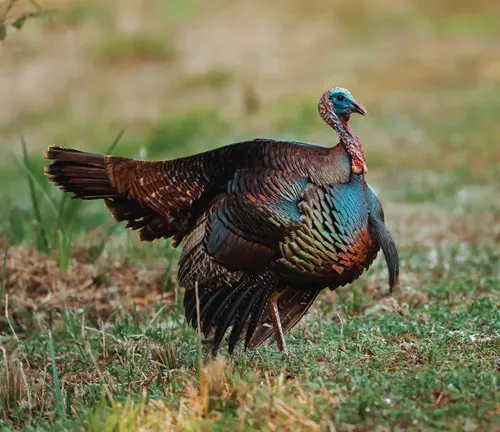

The Osceola Wild Turkey (Meleagris gallopavo osceola) is characterized by its striking and distinctive appearance. These birds have glossy, dark feathers that display iridescent hues of green and bronze under certain lighting conditions. Mature males, known as toms, typically have prominent beard-like feathers hanging from their chests, as well as colorful wattles, or caruncles, on their throats. During the breeding season, toms may puff up their feathers and fan out their tail feathers in elaborate displays to attract females. In contrast, females, or hens, are slightly smaller and less vibrant in coloration, with more muted plumage. Overall, the Osceola Wild Turkey is an impressive bird with visually captivating features that contribute to its allure in Florida’s natural landscapes.
Behavior and Mating Habits
Courtship Rituals
During the breeding season, male Osceola Wild Turkeys engage in elaborate courtship rituals to attract females. These rituals typically involve a series of displays aimed at demonstrating the male’s fitness and desirability as a mate. One common display is the puffing up of feathers, where the male fluffs out its plumage to appear larger and more impressive. Additionally, males may spread their tail fans into a striking display, showcasing the intricate patterns and vibrant colors of their feathers. Vocalization plays a crucial role in courtship as well, with males emitting distinctive gobbling sounds to communicate with females and assert their dominance. These courtship rituals are not only visually impressive but also serve to establish hierarchy among males and facilitate the selection of mates.
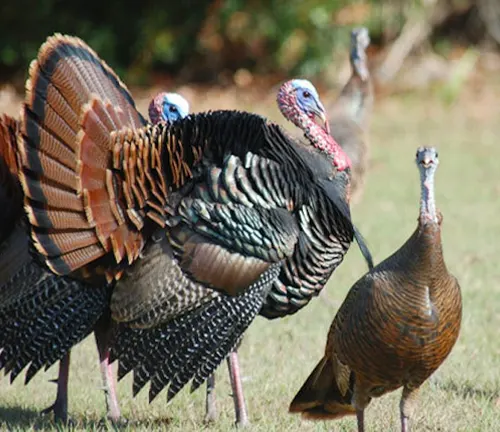
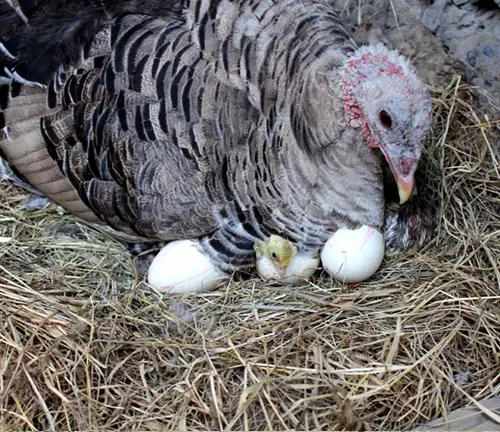
Nesting and Incubation
After mating, female Osceola Wild Turkeys construct ground nests concealed within dense vegetation, such as tall grasses or shrubs. The nest is typically a shallow depression lined with leaves, grass, and other natural materials. Once the nest is complete, the female lays a clutch of eggs, usually numbering between 8 to 12 eggs, depending on factors such as age and environmental conditions. The female then diligently incubates the eggs, using her body warmth to maintain optimal temperature levels for development. Incubation typically lasts around 28 days, during which the female rarely leaves the nest except to feed briefly. Upon hatching, the young, called poults, are precocial, meaning they are born with their eyes open and are capable of moving around and feeding themselves shortly after hatching. The female plays a critical role in caring for and protecting the poults during their early stages of development, teaching them essential survival skills until they are ready to fend for themselves.
Diet and Feeding Behavior
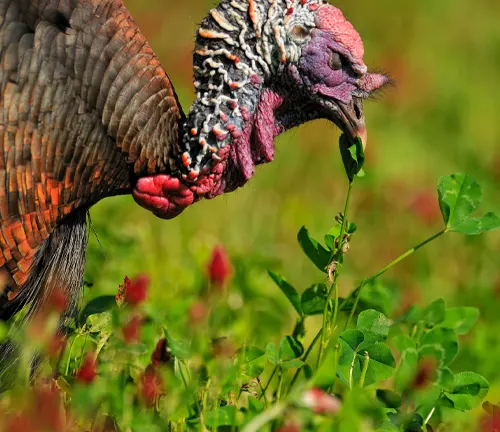
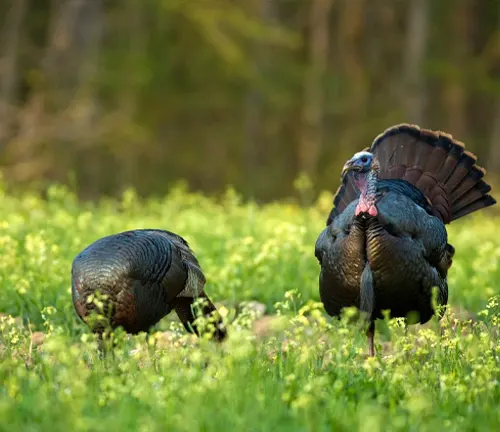
Osceola Wild Turkeys are omnivorous birds with a diverse diet that includes a variety of plant matter, insects, and small vertebrates. They are opportunistic feeders, meaning they will consume whatever food sources are readily available in their habitat.
A significant portion of the Osceola Wild Turkey’s diet consists of plant materials such as seeds, nuts, fruits, and berries. They forage on the forest floor, utilizing their keen eyesight and acute sense of hearing to locate these food sources. In addition to terrestrial plants, Osceola turkeys may also feed on aquatic vegetation found near water sources.
Insects and other invertebrates form another important component of the Osceola Wild Turkey’s diet, especially during the spring and summer months when these protein-rich food sources are abundant. Turkeys will actively search for insects, spiders, worms, and other small creatures in leaf litter, soil, and rotting wood.
While plant matter and invertebrates constitute the bulk of their diet, Osceola Wild Turkeys may also opportunistically consume small vertebrates such as amphibians, reptiles, and even small mammals if the opportunity arises.
Conservation Status
Threats
Despite being a symbol of Florida’s wilderness, Osceola Wild Turkeys face several threats to their survival and well-being. Habitat loss and fragmentation due to urbanization, agricultural expansion, and land development are among the most significant threats to turkey populations. As natural habitats are converted into human-dominated landscapes, turkeys lose crucial feeding, roosting, and nesting areas, leading to declines in population numbers.
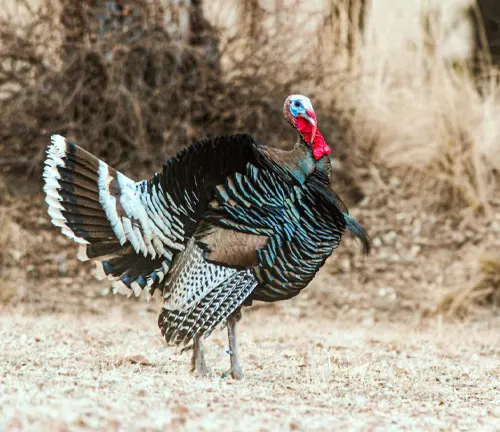
Predation by introduced species such as feral pigs, raccoons, and domestic dogs also poses a threat to Osceola Wild Turkeys, particularly during nesting and brooding periods when eggs and young poults are vulnerable to predation. Additionally, diseases such as avian pox, avian influenza, and West Nile virus can affect turkey populations, causing illness and mortality.
Illegal hunting and poaching also pose a threat to Osceola Wild Turkeys, with some individuals being targeted for their meat, feathers, or other body parts. Overharvesting can lead to population declines and disrupt natural breeding and reproductive cycles.
Conservation Efforts
Several conservation organizations, along with state and federal wildlife agencies, are actively involved in efforts to conserve and protect Osceola Wild Turkey populations and their habitats. These efforts focus on various strategies aimed at addressing the threats facing turkey populations and promoting their long-term viability.
Habitat preservation and restoration projects play a crucial role in conserving Osceola Wild Turkeys, with initiatives aimed at protecting and enhancing essential habitat areas, creating wildlife corridors, and restoring degraded ecosystems. By safeguarding key habitats such as pine flatwoods, hardwood swamps, and other natural areas, conservationists aim to provide turkeys with the resources they need to thrive.
Research and monitoring programs help to gather valuable data on Osceola Wild Turkey populations, behavior, and ecology, informing conservation efforts and management strategies. By studying turkey demographics, habitat use patterns, and population trends, researchers can identify potential threats and implement targeted conservation actions.
Education and outreach programs are essential for raising awareness about the importance of Osceola Wild Turkeys and the need for their conservation. These programs engage local communities, landowners, hunters, and policymakers, fostering a sense of stewardship and encouraging support for turkey conservation initiatives.
Regulated hunting seasons and bag limits are implemented to ensure sustainable harvests of wild turkeys while maintaining healthy population levels. Hunting regulations are based on scientific research and population assessments, with the goal of balancing the interests of hunters with the long-term conservation of turkey populations.
Different Species
Eastern Wild Turkey
(Meleagris gallopavo silvestris)
This subspecies is found in the eastern United States and parts of Canada. It is one of the largest subspecies and has been successfully introduced to various regions outside its native range.
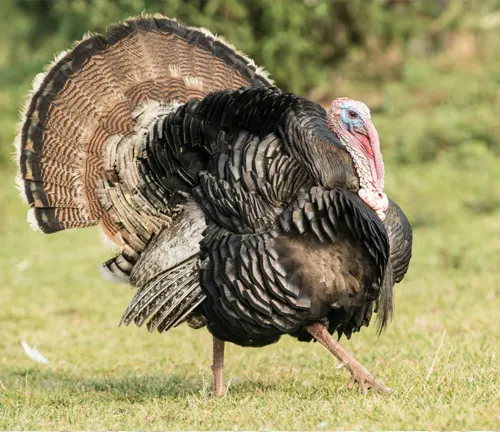
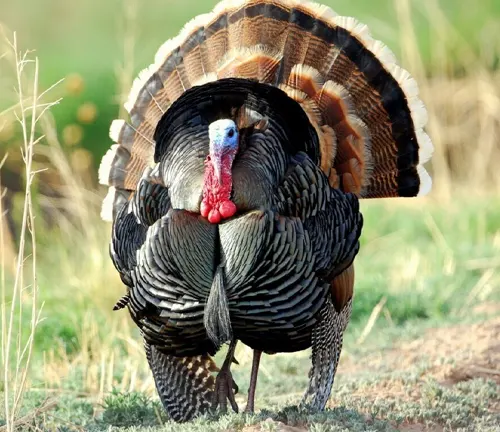
Rio Grande Wild Turkey
(Meleagris gallopavo intermedia)
Native to the central plains of the United States, particularly Texas, Oklahoma, Kansas, and parts of Mexico. It tends to inhabit more open habitats such as grasslands and brushy areas.
Merriam’s Wild Turkey
(Meleagris gallopavo merriami)
Found in the mountainous regions of the western United States, including the Rocky Mountains and the Sierra Nevada. This subspecies has distinctive white tips on its tail feathers and thrives in high-altitude habitats.
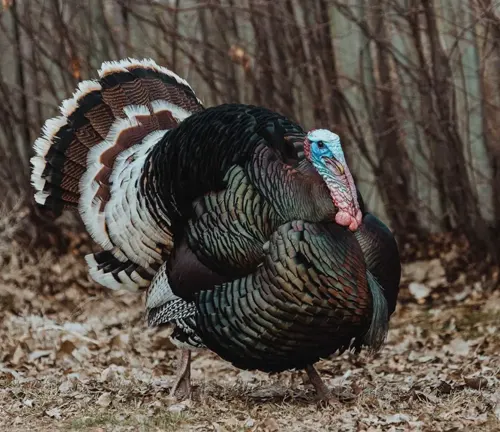
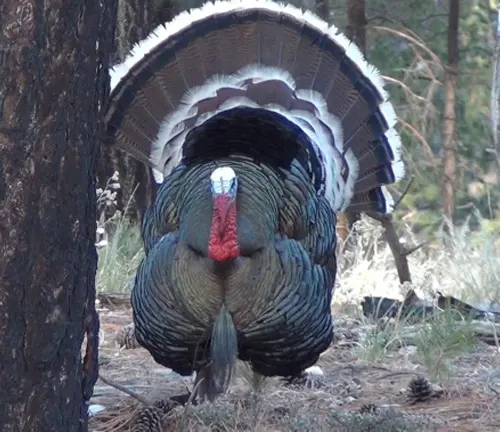
Gould’s Wild Turkey
(Meleagris gallopavo mexicana)
Inhabits the mountainous regions of northern Mexico and parts of the southwestern United States, including Arizona and New Mexico. It is the largest of all wild turkey subspecies, with long, slender legs and a more colorful plumage.
Florida Wild Turkey
(Meleagris gallopavo osceola)
Also known as the Osceola Wild Turkey, it is exclusive to the state of Florida and primarily inhabits the peninsula’s diverse habitats, including pine flatwoods and hardwood swamps.
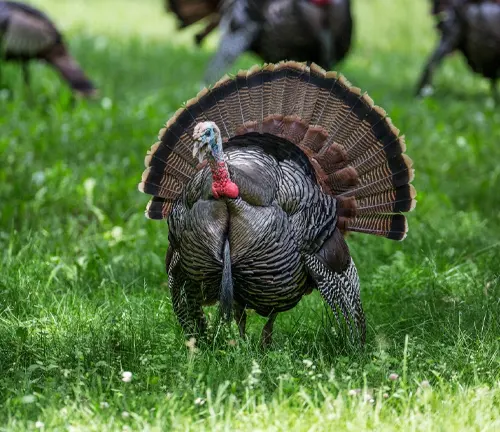
Frequently Asked Questions (FAQs)
- What is the Osceola Wild Turkey?
The Osceola Wild Turkey is a subspecies of wild turkey native to Florida, known for its unique habitat preferences and distinctive appearance. - Where can Osceola Wild Turkeys be found?
Osceola Wild Turkeys are primarily found in the forests and woodlands of the Florida peninsula, ranging from pine flatwoods to hardwood swamps. - How can I identify an Osceola Wild Turkey?
Osceola turkeys have glossy dark feathers with iridescent green and bronze hues, and mature males typically have prominent beard-like feathers and colorful wattles on their throats. - Are Osceola Wild Turkeys endangered?
While not currently listed as endangered, Osceola Wild Turkeys face threats from habitat loss, predation, and diseases, making conservation efforts crucial for their continued survival. - What is the breeding season for Osceola Wild Turkeys?
The breeding season, also known as the mating season, typically occurs in the spring when males engage in elaborate courtship displays to attract females. - Do Osceola Wild Turkeys migrate?
Osceola turkeys generally have small home ranges and do not migrate extensively. However, they may move seasonally in search of food and suitable nesting sites. - Are Osceola Wild Turkeys aggressive towards humans?
Wild turkeys are generally wary of humans and will avoid confrontations. However, like any wild animal, they may become defensive if provoked or feel threatened. - Can Osceola Wild Turkeys fly?
Yes, Osceola turkeys, like all wild turkeys, are capable of short bursts of flight to escape predators or roost in trees. - How can I support Osceola Wild Turkey conservation efforts?
You can support conservation organizations working to protect turkey habitat, participate in citizen science projects, and advocate for sustainable land management practices. - Are there any cultural traditions associated with Osceola Wild Turkeys?
Yes, Osceola Wild Turkeys hold cultural significance for indigenous tribes like the Seminole, symbolizing resilience, abundance, and connection to the land.


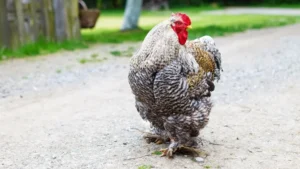
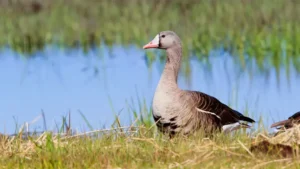
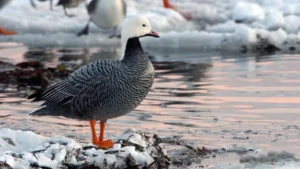
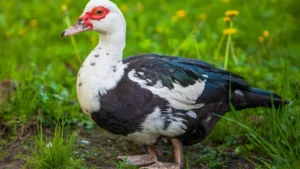
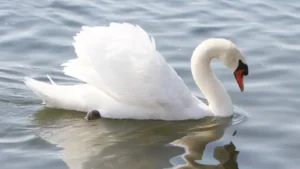
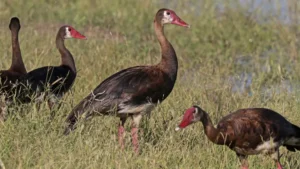
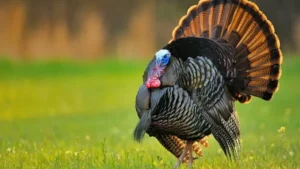
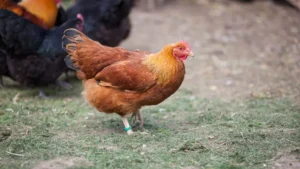
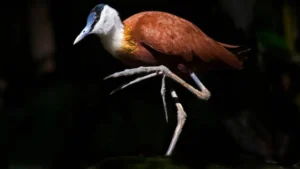


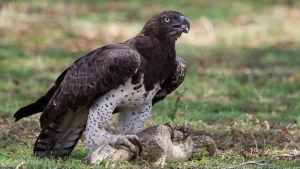
Leave your comment